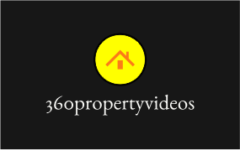In today’s digital landscape, social media has become a critical platform for real estate marketing. Leveraging video content can significantly enhance your social media strategy by engaging potential buyers, showcasing properties, and building your brand. Here’s how to effectively use real estate video for social media marketing to maximize your reach and impact.
1. Understand the Role of Video in Social Media
Increased Engagement:
Video content tends to attract more engagement compared to static posts. It captures attention quickly, encourages interaction, and keeps viewers on your content longer, which can lead to higher visibility and shares.
Showcase Properties:
Video allows you to present properties in a dynamic way, highlighting features and creating an immersive experience. It provides a more comprehensive view compared to photos, helping potential buyers envision themselves in the space.

Build Trust and Credibility:
Well-produced videos can showcase your professionalism and expertise. By sharing valuable content, such as market insights or property tours, you establish yourself as a knowledgeable and trustworthy real estate professional.
2. Choose the Right Type of Video Content
Property Tours:
Create virtual tours that take viewers through the property. Highlight key features, such as spacious rooms, modern amenities, and unique selling points. These tours provide a comprehensive view and help potential buyers get a feel for the property.
Agent Introductions:
Introduce yourself and your team with engaging video profiles. Share your experience, expertise, and what sets you apart from other agents. Personal videos build a connection with potential clients and establish trust.
Client Testimonials:
Feature satisfied clients sharing their positive experiences. Testimonials provide social proof and can persuade potential buyers to consider working with you. Ensure these videos are authentic and highlight genuine feedback.
Market Updates:
Share video updates on local market trends, new listings, and real estate news. Position yourself as a knowledgeable resource by providing valuable information that keeps your audience informed and engaged.
Behind-the-Scenes:
Offer a glimpse behind the scenes of your real estate business. Show the process of staging a home, preparing for an open house, or attending industry events. This content humanizes your brand and builds a deeper connection with your audience.
3. Optimize Video for Different Social Media Platforms
Facebook:
- Format: Use square (1:1) or vertical (4:5) videos to maximize screen space on mobile devices.
- Length: Keep videos between 1-2 minutes for maximum engagement.
- Captions: Add captions as many users watch videos with the sound off.
Instagram:
- Format: Use square (1:1) or vertical (9:16) videos for Stories and Reels.
- Length: Keep Reels under 60 seconds and Stories under 15 seconds per slide.
- Hashtags: Use relevant hashtags to increase visibility and reach.
YouTube:
- Format: Use horizontal (16:9) videos for a standard viewing experience.
- Length: Aim for 2-5 minutes for property tours and informative content.
- SEO: Optimize video titles, descriptions, and tags with relevant keywords.
LinkedIn:
- Format: Use horizontal (16:9) videos for professional presentations and updates.
- Length: Keep videos between 1-3 minutes for professional content.
- Professional Tone: Maintain a polished and professional tone suited to LinkedIn’s audience.
Twitter:
- Format: Use square (1:1) or vertical (9:16) videos for mobile users.
- Length: Limit videos to 30-60 seconds to fit within Twitter’s fast-paced environment.
- Captions: Include captions to engage users who watch without sound.
4. Create Engaging and Shareable Content
Hook Viewers Early:
Capture attention in the first few seconds with an engaging hook. Use eye-catching visuals, intriguing questions, or compelling statements to draw viewers in quickly.
Highlight Key Points:
Focus on the most important features or messages. Keep the content concise and highlight key selling points to maintain viewer interest throughout the video.
Include Calls to Action:
Encourage viewers to take action, such as scheduling a showing, visiting your website, or contacting you for more information. Use clear and compelling calls to action to drive engagement and conversions.
Incorporate Branding:
Include your logo, contact information, and branding elements in the video. Consistent branding helps reinforce your identity and makes it easier for viewers to remember and recognize you.
Encourage Sharing:
Create content that’s shareable and relevant to your audience. Engaging videos that provide value or entertainment are more likely to be shared, increasing your reach and visibility.
5. Analyze and Adjust Your Strategy
Monitor Performance:
Use analytics tools provided by social media platforms to track video performance. Monitor metrics such as views, engagement rates, and click-through rates to assess the effectiveness of your videos.
Gather Feedback:
Pay attention to viewer comments and feedback. Use this input to understand what resonates with your audience and make improvements to your content strategy.
Adjust Content:
Based on performance data and feedback, adjust your content strategy to better meet your audience’s preferences. Experiment with different types of videos, formats, and lengths to find what works best.
Stay Consistent:
Maintain a consistent posting schedule to keep your audience engaged and build momentum. Regularly share fresh content to stay top-of-mind and continually attract new viewers.
Conclusion
Utilizing real estate video for social media marketing can significantly enhance your property promotion efforts and build your brand. By creating engaging video content, optimizing for different platforms, and analyzing performance, you can effectively connect with your audience, showcase properties, and drive interest in your listings. Follow these tips to leverage the power of video and make the most of your social media marketing strategy.

